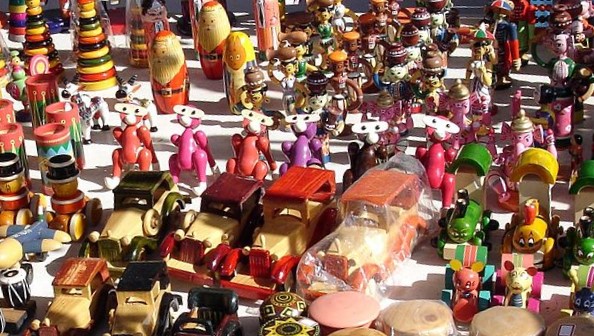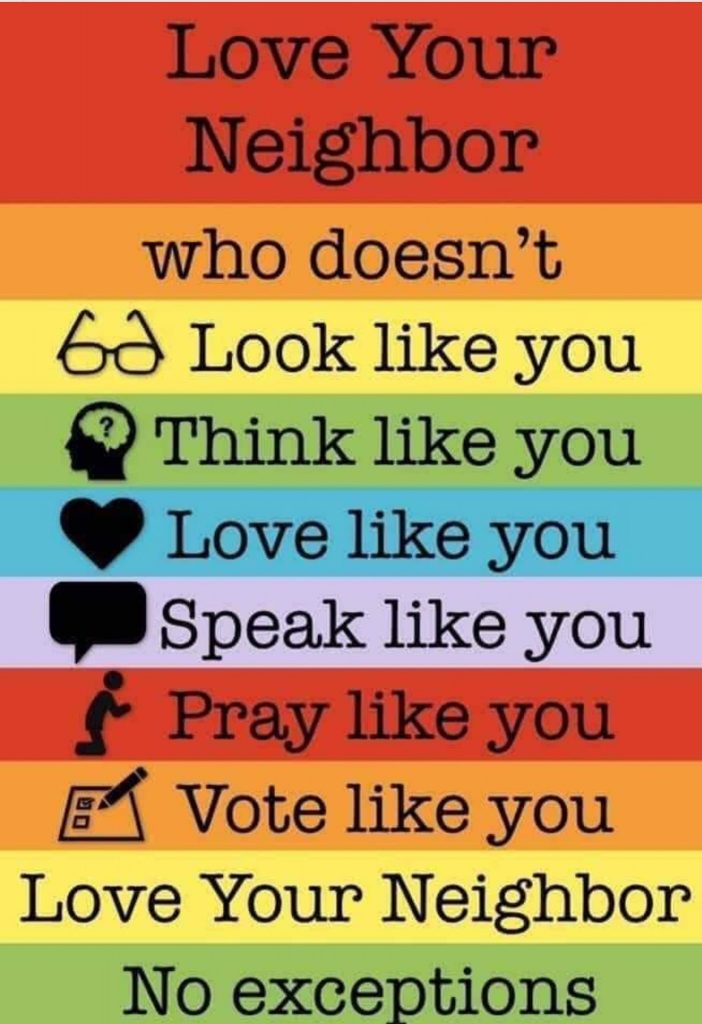Why, yes. Yes, it is. No wonder you wonder, given that we are bombarded with ads, decorations, parties, movies, etc., etc., etc. Even if you don’t observe Christmas in any way, you can’t escape.
Some Places Observe Christmas All Month Long
- Christmas in the Villages: Van Buren County, Iowa
- Features a house tour, Festival of Trees, bake sale, Santa visits, holiday dinners, lighting displays, soup suppers, as well as the natural beauty found around the county
- Christmas New Orleans Style: Louisiana
- Cathedral Christmas concerts, caroling in Jackson Square, parades with Papa Noel, cooking demonstrations, Celebration in the Oaks, tours of 19th century houses decorated for the season, Réveillon dinners, and traditional Creole holiday dishes
- Colonial Christmas (Christmastide in Virginia): Jamestown Settlement, Williamsburg and Yorktown, Virginia
- 17th and 18th century holiday traditions
- At Jamestown Settlement, a film and guided tour compare the English customs of the period with how Christmas might have been observed in the early years of the Jamestown colony.
- At the Yorktown Victory Center, you can learn about Christmas and winter in a military encampment during the American Revolution ands holiday preparations on a 1780s Virginia farm.
Christmas Isn’t the Only Religious Observance
Other Christian Observances:
- Dec. 6: St. Nicholas Day
- Dec. 8: Immaculate Conception
- Dec. 12: Feast Day of our Lady of Guadalupe
- Dec. 16: Posadas Navideñas
- Dec. 27: Feast of the Holy Family
- Dec. 28: Holy Innocents Day
- Dec. 31: Night Watch
Non-Christian Religious Observances:
- Dec. 8: Rohatsu (Bodhi Day, when Siddhartha Guatama achieved enlightenment), Buddhism
- Dec. 10-18 in 2021: Hanukkah (anniversary of the rededication of the Second Temple), Judaism
- Dec. 21: Solstice (shortest day of the year and start of winter), Wicca/Pagan
- Dec. 26: Zarathosht No-Diso (Death of Prophet Zarathustra), Zoroastrian
Observances That Have Nothing to Do With Religion!
N.B.: Observances that cross categories are listed only once.
Kwanzaa
“Matunda ya kwanza” means “first fruits” in Swahili and is the origin of the holiday’s name. Maulana Ndabezitha Karenga, creator of the holiday, wanted to celebrate family, community, and pan-African cultural traditions. The seven days and nights of Kwanzaa are full of significant sevens. The seven Principles (unity, self-determination, collective responsibility, cooperative economics, purpose, creativity, and joy) and seven Symbols (Kinara candleholder, seven candles, crops, corn, unity cup, gifts, all on a traditional mat) were celebrated by nearly seven million people last year.
- Cause Related
- Decembeaver (fundraising for cancer)
- Learn a Foreign Language Month
- (Many libraries offer online resources this month to boost your polyglot credentials!)
- Made in America Month (buying locally-made goods)
- Merry Merchants Month (filling food pantries)
- National Car Donation Month
- National Write A Business Plan Month
- Procrastination Awareness Month
- Spiritual Literacy Month
- Universal Human Rights Month
- Food Related
- Buckwheat Month
- Cooked Grasshopper Month
- Exotic Fruits Month
- National Eggnog Month
- National Fruitcake Month
- National Pear Month
- Noodle Ring Month
- Quince and Watermelon Month
- Root Vegetable Month
- Tomato and Winter Squash Month
- Tropical Fruits Month
- Health & Safety Related
- Colorectal Cancer Education and Awareness Month
- Handwashing Awareness Month
- Handwashing Awareness Week is the first full week of
- International Sharps Injury Prevention Month
- National Drunk & Drugged Driving Prevention Month
- (also known as 3D Month or Impaired Driving Prevention)
- National Identity Theft Prevention and Awareness Month
- Safe Toys and Gifts Month
- Seasonal Affective Disorder Awareness Month (SADS)
- TTTS Awareness Month
- (Twin to Twin Transfusion Syndrome, a condition affecting 10-15% of identical twins in the womb)
- World AIDS Awareness Month
- Worldwide Food Service Safety Month
- Recognition Related
- Art and Architecture Month
- Hi Neighbor Month
- Love Your Neighbor Month
- National Tie Month
- Recreation and Leisure Related
- Bingo Birthday Month
- National Closed Caption TV Month
- Read a New Book Month
- Sign Up for Summer Camp Month
- Stress-Free Family Holidays Month
- Write a Friend Month
BOTTOM LINE: December doesn’t have to be all about Christmas! Live a little, along with other like-minded folks.






























